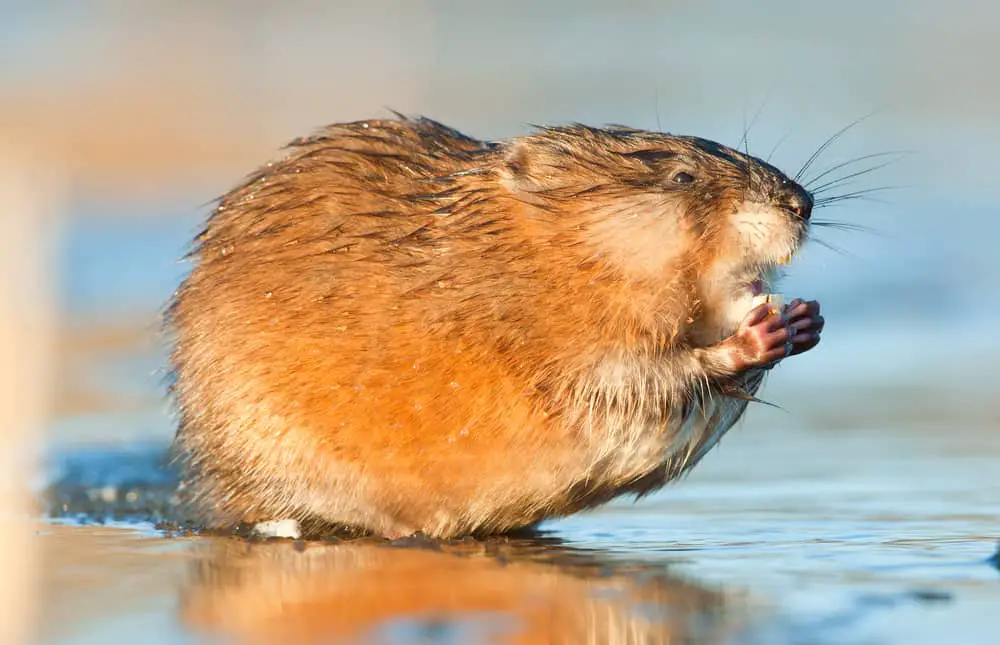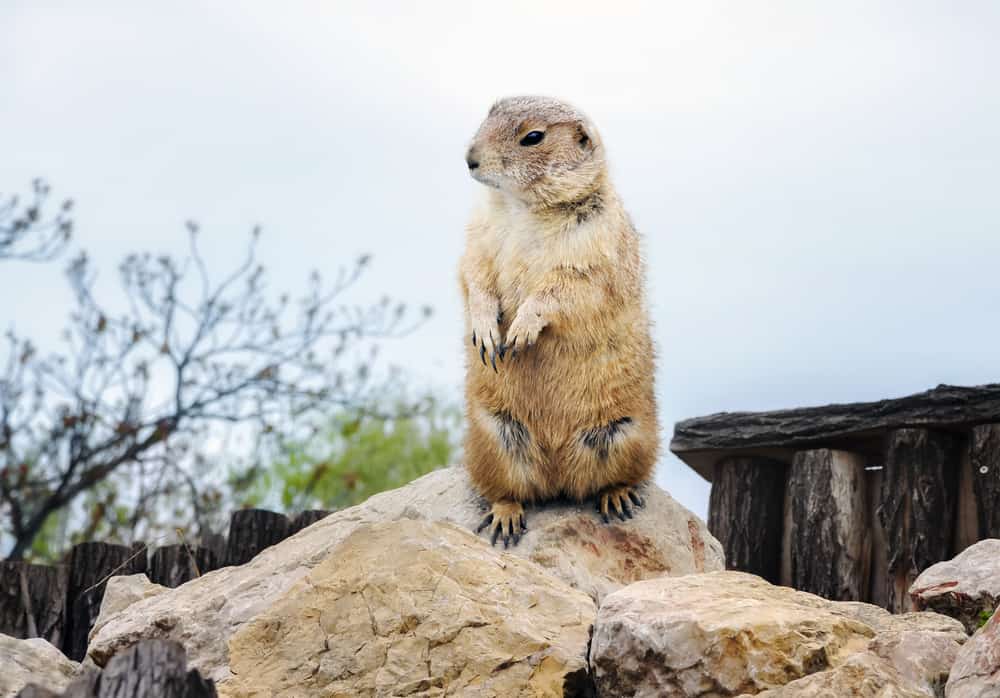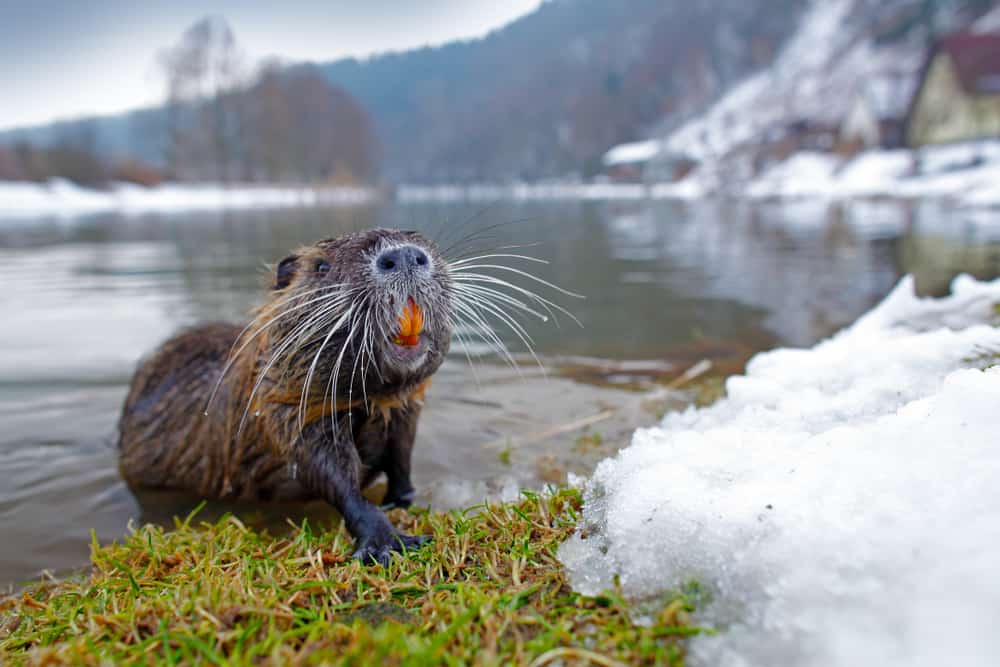
Muskrats are large aquatic rodents that live primarily in North America. They can be found in wet environments such as marshes, swamps, lakes, and ponds. Their diet is mostly a vegetarian one, consisting of various plants. Some of these plants include grass, sedges, and cattails.
Even though they’re known to be bigger rodents, they only weigh about four pounds and are about 16 to 25 inches long. They work hard to find food and make a shelter to stay alive. The average lifespan of a muskrat is about 3 to 4 years.
Table of Contents
- Groundhog
- Nutria
- Beaver
- North American river otter
- European water vole
- Capybara
- Rakali
- Gray squirrel
- Pocket gopher
- Moles
- Field voles
- Minks
- Black rats
- Golden-bellied water rat
- Marsh rabbits
Groundhog

Groundhogs are moderate-sized rodents with light brown fur. They are part of the Sciuridae family, which means they are found in most parts of North America. Groundhogs tend to reside in open areas like fields and grassland. They burrow and build dens for protection from other animals in their habitat.
Groundhogs are omnivores that eat a mostly veggie diet. Groundhogs weigh about 13 pounds and can grow up to 20 inches. Groundhogs can be vocal at times but are more quiet and solitary animals. A successful lifespan for this species is about 2 to 3 years.
Similar:
- Omnivorous diet
- Rodents
- Lifespan is shorter
Different:
- Groundhogs don’t live an aquatic lifestyle
- Muskrats aren’t known for digging as much
- Muskrats are more nocturnal, groundhogs are more diurnal
Nutria

Nutrias have many similarities with the muskrat. The rodents are indigenous to South America and can be found on multiple continents. Water-filled ecosystems are where they can be located, such as marshes and wetlands.
Most of the nutria’s meals are vegetation that can be found in their own environment. Small water species such as mussels are also a part of their diet. Nutrias are medium in length and weight, measuring around 2 feet long and weighing 12 pounds.
Nutrias cannot see very well, so they communicate in more physical ways to compensate for their limited sight. The average lifespan of the … Read the rest of the story.
No comments:
Post a Comment